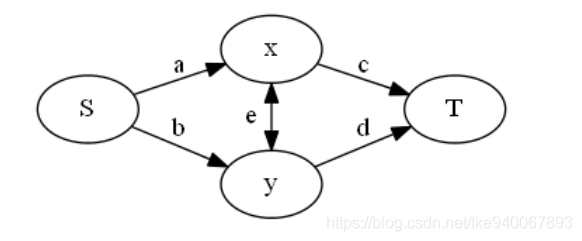版权声明:本人版权意识薄弱,请随意转载 https://blog.csdn.net/Ike940067893/article/details/88429459
题面
分析
考虑如何最小割建图,因为这仍然是二元关系,我们可以通过解方程来确定怎么建图,具体参考论文
<<浅析一类最小割问题 湖南师大附中 彭天翼>>
那么我们来看看怎么解方程

设存在一对二元关系
,那么假设分在
一边表示不雇佣,
一边表示雇佣.先把总收益全部加起来,那么只要考虑会每种情况会在此基础上减去多少.
- 如果两个都雇佣 :
- 两个都不雇佣 :
- 雇佣 :
- 雇佣
:
因为答案里已经算入 同时雇佣所带来的收益 ,所以 要减去
又因为如果只雇佣一个,还会带来 的损失,所以是
满足的一组解就是
那么加上一些优化:
- 把一个点到 的容量全部存起来最后只连一条边;
- 最大流的一些小优化
- 其实正常情况下 是两条边(代码实现中要存 条),但是可以直接只连一条边(代码实现中只存 条),正向边的容量为 ,反向边的容量也设为 而不是 .快很多.
- …
CODE
#include <cstdio>
#include <cstring>
#include <algorithm>
using namespace std;
typedef long long LL;
char cb[1<<15],*cs=cb,*ct=cb;
#define getc() (cs==ct && (ct = (cs = cb) + fread(cb , 1 , 1<<15 , stdin),cs==ct)?0:*cs++)
template<typename T>inline void read(T &num) {
char ch; while((ch=getc())<'0'||ch>'9');
for(num=0;ch>='0'&&ch<='9';num=num*10+ch-'0',ch=getc());
}
const int inf = 1e9;
const int MAXN = 1005;
const int MAXM = 2000005;
const int dx[] = { 1, -1, 0, 0, 0 };
const int dy[] = { 0, 0, -1, 1, 0 };
int n, m, fir[MAXN], S, T, cnt;
struct edge { int to, nxt; LL c; }e[MAXM];
inline void add(int u, int v, LL cc, LL rc=0) {
e[cnt] = (edge){ v, fir[u], cc }; fir[u] = cnt++;
e[cnt] = (edge){ u, fir[v], rc }; fir[v] = cnt++;
}
int dis[MAXN], vis[MAXN], info[MAXN], cur, q[MAXN];
inline bool bfs() {
int head = 0, tail = 0;
vis[S] = ++cur; q[tail++] = S;
while(head < tail) {
int u = q[head++];
for(int i = fir[u]; ~i; i = e[i].nxt)
if(e[i].c && vis[e[i].to] != cur)
vis[e[i].to] = cur, dis[e[i].to] = dis[u] + 1, q[tail++] = e[i].to;
}
if(vis[T] == cur) memcpy(info, fir, (T+1)<<2);
return vis[T] == cur;
}
LL dfs(int u, LL Max) {
if(u == T || !Max) return Max;
LL flow=0, delta;
for(int &i = info[u]; ~i; i = e[i].nxt)
if(e[i].c && dis[e[i].to] == dis[u] + 1 && (delta=dfs(e[i].to, min(e[i].c, Max-flow)))) {
e[i].c -= delta, e[i^1].c += delta, flow += delta;
if(flow == Max) return flow;
}
return flow;
}
inline LL dinic() {
LL flow=0, x;
while(bfs()) {
while((x=dfs(S, inf))) flow+=x;
}
return flow;
}
LL sum, tmp[1005];
inline int enc(int i, int j) { return (i-1)*m + j; }
int main () {
memset(fir, -1, sizeof fir);
read(n); S = 0; T = n+1;
for(int i = 1, x; i <= n; ++i)
read(x), add(S, i, x);
for(int i = 1, x; i <= n; ++i)
for(int j = 1; j <= n; ++j) {
read(x);
if(x && i < j) {
sum += 2ll*x, tmp[i] += x, tmp[j] += x;
add(i, j, 2ll*x, 2ll*x);
}
}
for(int i = 1; i <= n; ++i)
if(tmp[i]) add(i, T, tmp[i]);
printf("%lld\n", sum-dinic());
}